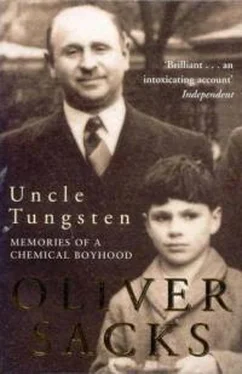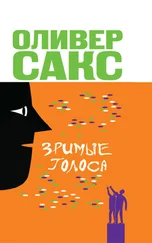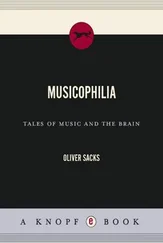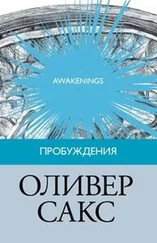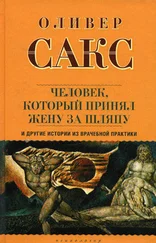‘Now I’ve got several different metals here, all in little grains. Why don’t you get some practice weighing these, measuring their volume, working out their density?’ I spent the next hour delightedly doing this and found that Uncle had indeed given me a huge range, from one silvery metal, a little tarnished, which had a density of less than 2, to one of his osmiridium grains (I recognized it), which was almost a dozen times as dense. When I measured the density of a little yellow grain, it was exactly the same as that of tungsten – 19.3, to be exact. ‘You see’, said Uncle, ‘gold’s density is almost the same as tungsten’s, but silver is much lighter. It is easy to feel the difference between pure gold and gilded silver – but you would have a problem with gold-plated tungsten.’
* * *
Scheele was one of Uncle Dave’s great heroes. Not only had he discovered tungstic acid and molybdic acid (from which the new element molybdenum was made), but hydrofluoric acid, hydrogen sulfide, arsine, and prussic acid, and a dozen organic acids, too. All this, Uncle Dave said, he did by himself, with no assistants, no funds, no university position or salary, but working alone, trying to make ends meet as an apothecary in a small provincial Swedish town. He had discovered oxygen, not by a fluke, but by making it in several different ways; he had discovered chlorine; and he had pointed the way to the discovery of manganese, of barium, of a dozen other things.
Scheele, Uncle Dave would say, was wholly dedicated to his work, caring nothing for fame or money and sharing his knowledge, whatever he had, with anyone and everyone. I was impressed by Scheele’s generosity, no less than his resourcefulness, by the way in which (in effect) he gave the actual discovery of elements to his students and friends – the discovery of manganese to Johan Gahn, the discovery of molybdenum to Peter Hjelm, and the discovery of tungsten itself to the d’Elhuyar brothers.
Scheele, it was said, never forgot anything if it had to do with chemistry. He never forgot the look, the feel, the smell of a substance, or the way it was transformed in chemical reactions, never forgot anything he read, or was told, about the phenomena of chemistry. He seemed indifferent, or inattentive, to most things else, being wholly dedicated to his single passion, chemistry. It was this pure and passionate absorption in phenomena – noticing everything, forgetting nothing – that constituted Scheele’s special strength.
Scheele epitomized for me the romance of science. There seemed to me an integrity, an essential goodness, about a life in science, a lifelong love affair. I had never given much thought to what I might be when I was ‘grown up’ – growing up was hardly imaginable – but now I knew: I wanted to be a chemist. A chemist like Scheele, an eighteenth-century chemist coming fresh to the field, looking at the whole undiscovered world of natural substances and minerals, analyzing them, plumbing their secrets, finding the wonder of unknown and new metals.
Uncle Tungsten was a complex mixture, at once intellectual and practical, as were most of his brothers and sisters, and the man who fathered them all. He loved chemistry, but he was not a ‘pure’ chemist, like his younger brother Mick; Uncle Dave was an entrepreneur, a businessman, as well. He was a manufacturer who made a moderately good living – there was always a ready sale for his bulbs and vacuum tubes, and this was enough. He knew everyone who worked for him in friendly, personal detail. He had no desire to expand, to become huge, as he could easily have done. He remained, as he had first been, a lover of metals and materials, endlessly fascinated by their properties. He would spend hundreds of hours watching all the processes in his factories: the sintering and drawing of the tungsten, the making of the coiled coils and molybdenum supports for the filaments, the filling of the bulbs with argon in the old factory in Farringdon, and the blowing of the glass bulbs and their pearling with hydrofluoric acid at his new factory in Hoxton. He did not need to do this – his staff was competent, and the machinery worked perfectly – but he loved it, and he would sometimes think of further refinements, new processes, as he did so. He did not really need the compact but finely equipped laboratories in his factories, but he was curious and addicted to experiment, some of it with immediate application to his manufacturing, though much of it, as far as I could judge, for the pure pleasure of it, for fun. Nor did he need to know, as he did in encyclopedic detail, the history of incandescent lamps, of lighting generally, and of the basic chemistry and physics behind them. But he loved to feel that he was part of a tradition – a tradition at once of pure science, applied science, artisanry, and industry.
Edison’s vision, Uncle liked to say, of light for the masses, had finally come true in the incandescent bulb. If someone could look at the earth from outer space, see how it rotated every twenty-four hours into the shadow of night, they would see millions, hundreds of millions, of incandescent bulbs light up nightly, glowing with white-hot tungsten, in the folds of that shadow – and know that man had finally conquered the darkness. The incandescent bulb had done more to alter social habits, human lives, Uncle would say, than any other invention he could think of.
And in many ways, Uncle Dave told me, the history of chemical discovery was inseparable from the quest for light. Before 1800, one had only candles or simple oil lamps such as had been used for thousands of years. Their light was feeble, and the streets were dark and dangerous, so one could hardly go out at night without a lantern or a full moon. There was a tremendous need for an efficient form of lighting that could be used safely and easily in the home and in streetlamps.
At the beginning of the nineteenth century gas lighting was introduced, and people experimented with many forms of this. Different nozzles produced gas flames of different shapes: there was the bat’s-wing and the fish-tail and the cock-spur and the cock’s-comb – I loved these names, as he said them, just as I loved the beautiful shapes of the flames.
But gas flames, with their glowing carbon particles, were scarcely brighter than candle flames. One needed something additional, a material that would shine with special brilliance when heated in a gas flame. Such a substance was calcia – calcium oxide, or lime – which shone with an intense greenish white light when heated. This ‘limelight’, Uncle Dave said, was discovered in the 1820 sand used to illuminate the stages in theaters for many decades – that was why we still talked about ‘the limelight’, even though we no longer used lime for incandescence. One could get a similar brilliant light by heating several other earths – zirconia, thoria, magnesia, alumina, zinc oxide. (‘Do they call that zincia?’ I asked. ‘No’, said Uncle, smiling – ’I never heard it called that.’)
It became clear by the 1870 s, after many oxides had been tried, that there were some mixtures that glowed more brilliantly than any of the individual oxides. Auer von Welsbach, in Germany, experimented with innumerable such combinations and finally, in 1891, hit on the ideal: a 99-to-1 mixture of thoria and ceria. This ratio was critical: a 100-to-1 or 98-to-1 ratio, Auer found, was far less effective.
Up to this point, bars or pencils of oxide had been used, but Auer found that ‘a fabric of suitable shape’, a ramie mantle, could provide a far greater surface area to be impregnated with his mixture and thus a brighter light. These mantles would revolutionize the whole industry of gas lighting, allowing it to seriously compete with the infant electric light industry.
Читать дальше
